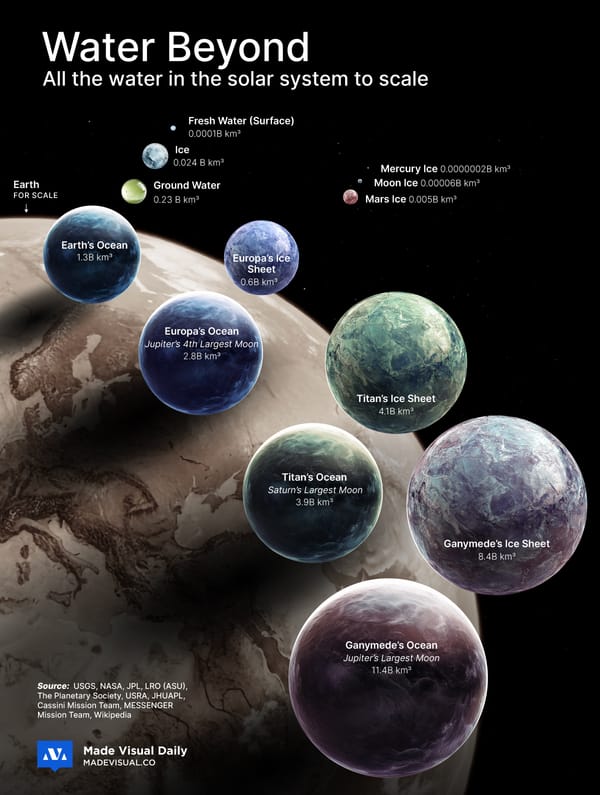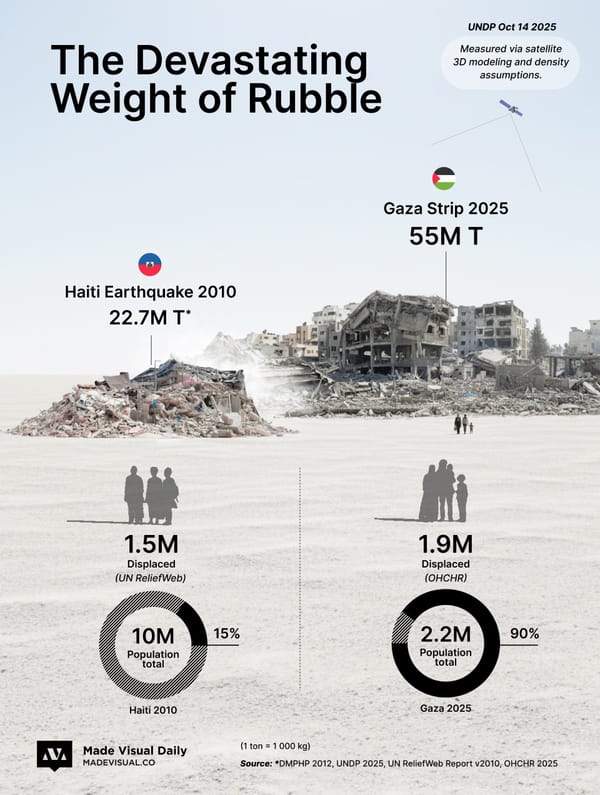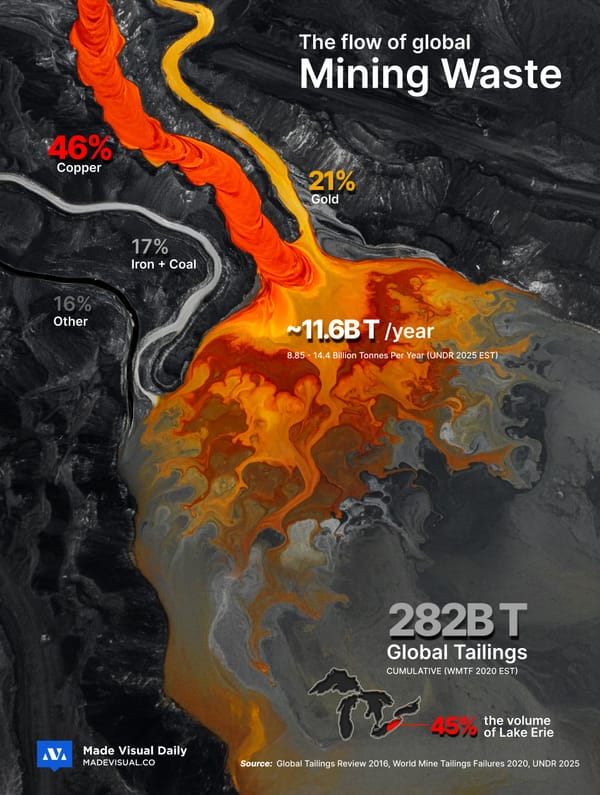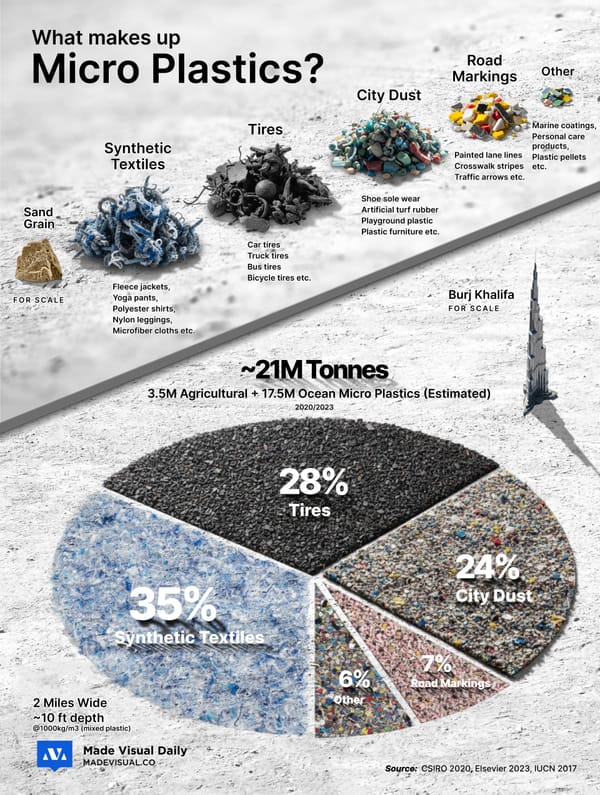Fresh water users

Globally, 69% of all freshwater withdrawals go toward agriculture, making farming the largest consumer of the planet’s most vital resource.
This breakdown comes from FAO’s AQUASTAT database, the UN’s global information system on water and agriculture. The data reflects global freshwater withdrawals, not total water use (which includes recycled and non-renewable sources). The figures are rounded as follows:
- 70% – Agriculture (irrigation, livestock, aquaculture)
- 19% – Industry (manufacturing, energy production, mining)
- 11% – Domestic use (drinking water, sanitation, household use)
This equates to a total of 3.918 trillion cubic meters annually (over 300 cubic km larger than the entirety of Lake Huron).
Regionally, the story is a bit more nuanced:
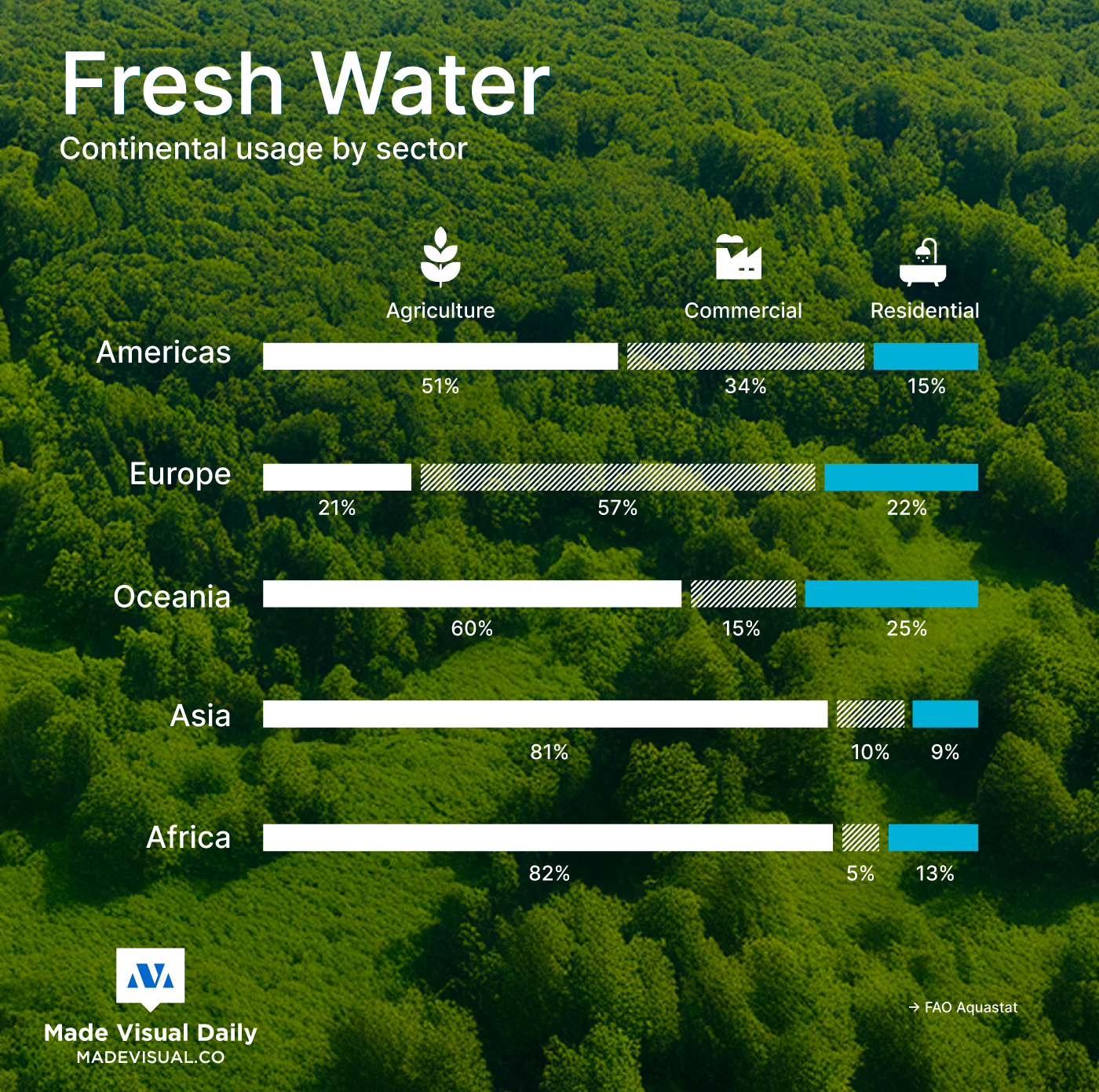
Some Asian countries, like India and Pakistan, use over 90% of their water for agriculture, while the trend is more commercial-focused in the Americas and Europe.
Related
- 🚰 Over 2 billion people live in countries experiencing high water stress, according to UN Water.
- 🐄 Animal agriculture is water-intensive — producing 1 kg of beef can require 15,000 liters of water.
- 💧 By 2050, global water demand is projected to rise by 20–30%, largely driven by agriculture.
- 🌍 Just 0.5% of all water on Earth is accessible, fresh, and available for human use.
- 🔄 More efficient irrigation techniques (like drip systems) can cut agricultural water use by 30–70%.


